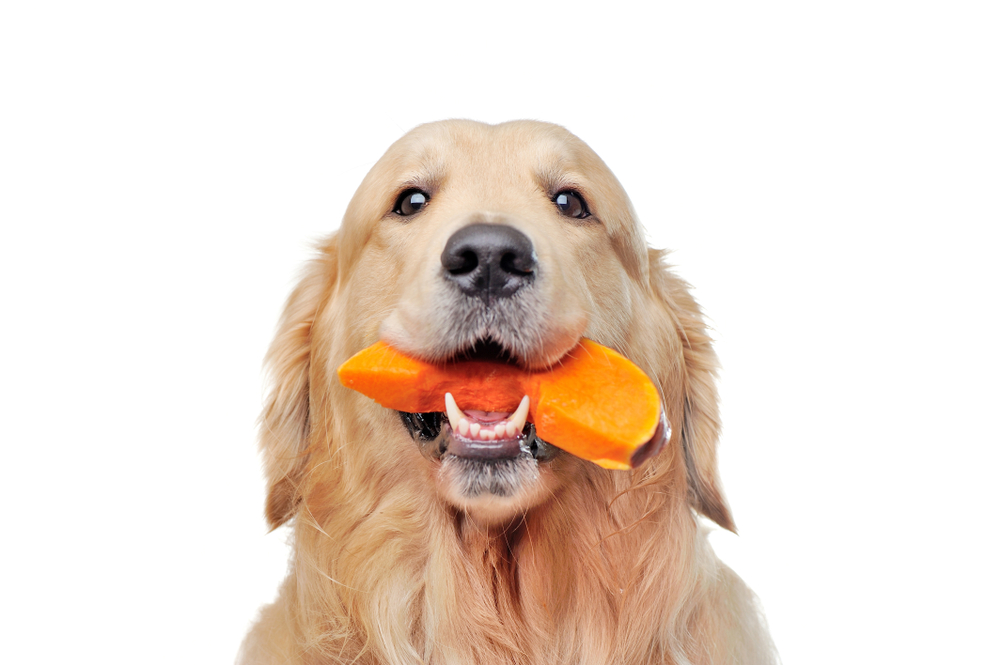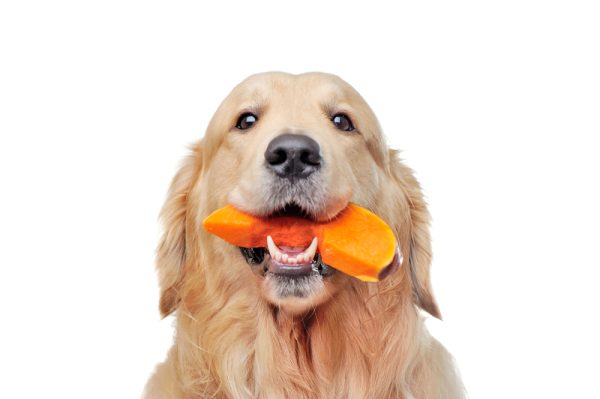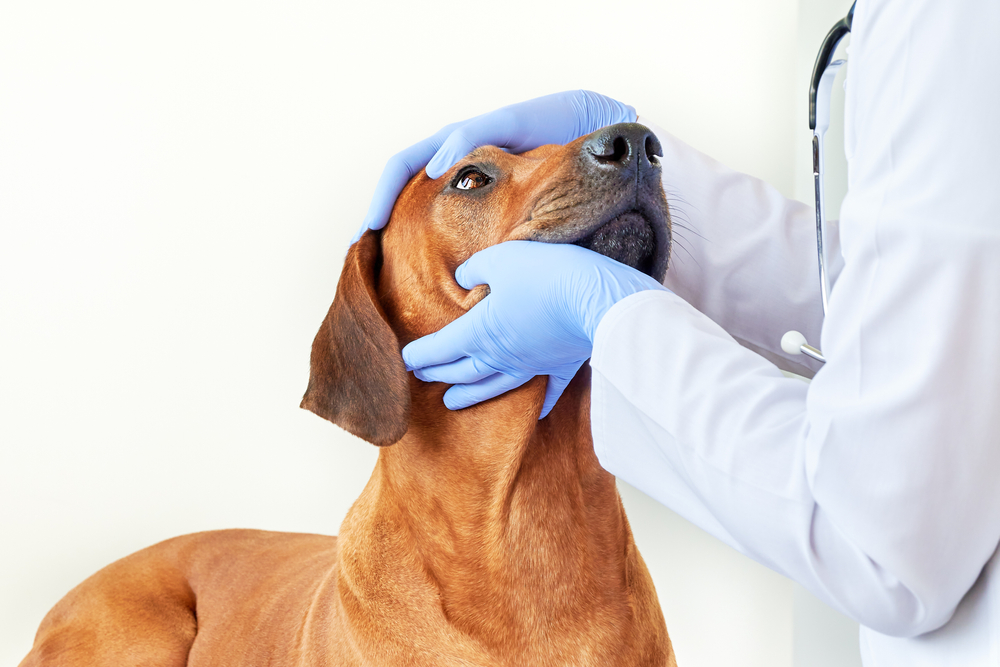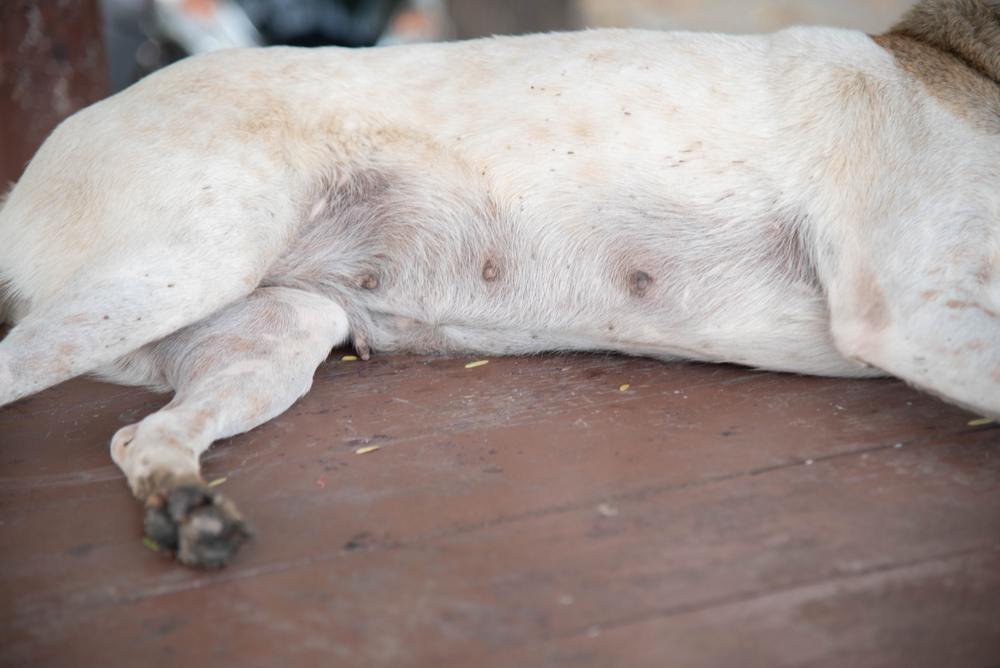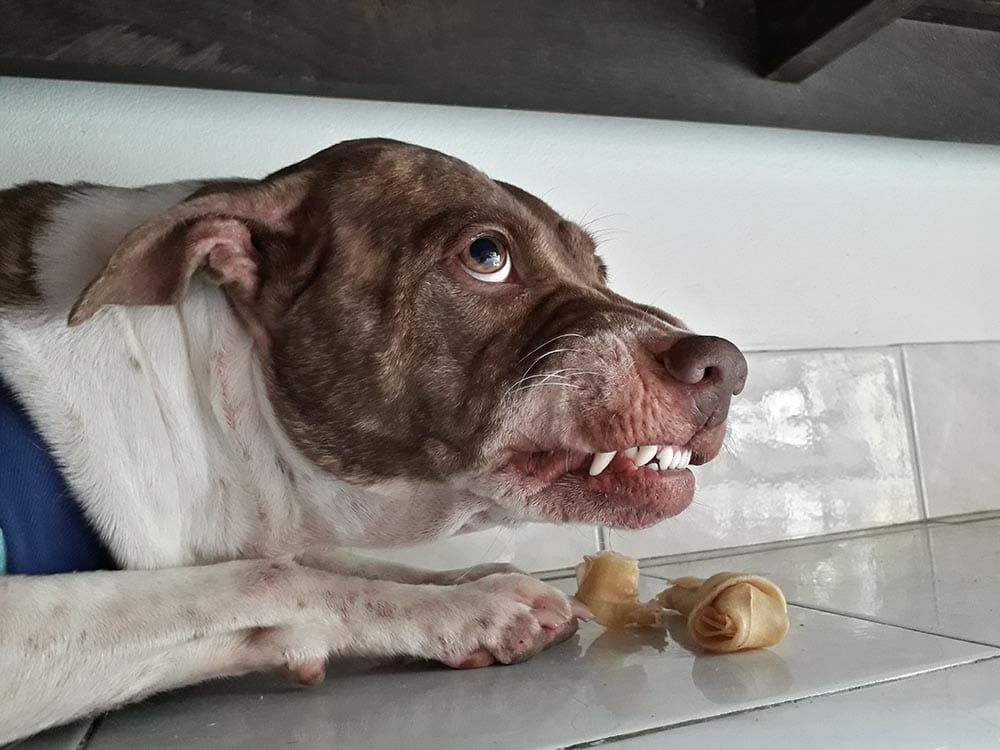As dog owners, we have our dog’s best interests at heart and want to keep them safe. One of the biggest risks to their health is what they put into their bodies because some foods are dangerous for dogs and can be fatal if eaten in large quantities. Most people know that chocolate, xylitol, and caffeine aren’t good for dogs, but what about healthy foods? This may leave you asking questions like, “Can dogs eat celery and carrots?” and “What about cucumbers and tomatoes?”
Although some of the foods on our list, such as pumpkin, cucumber, and bell peppers, are technically fruits, we’re going to ignore the debates and discuss all the most commonly known vegetables your dog can eat.

The 14 Vegetables That Dogs Can Eat
1. Broccoli
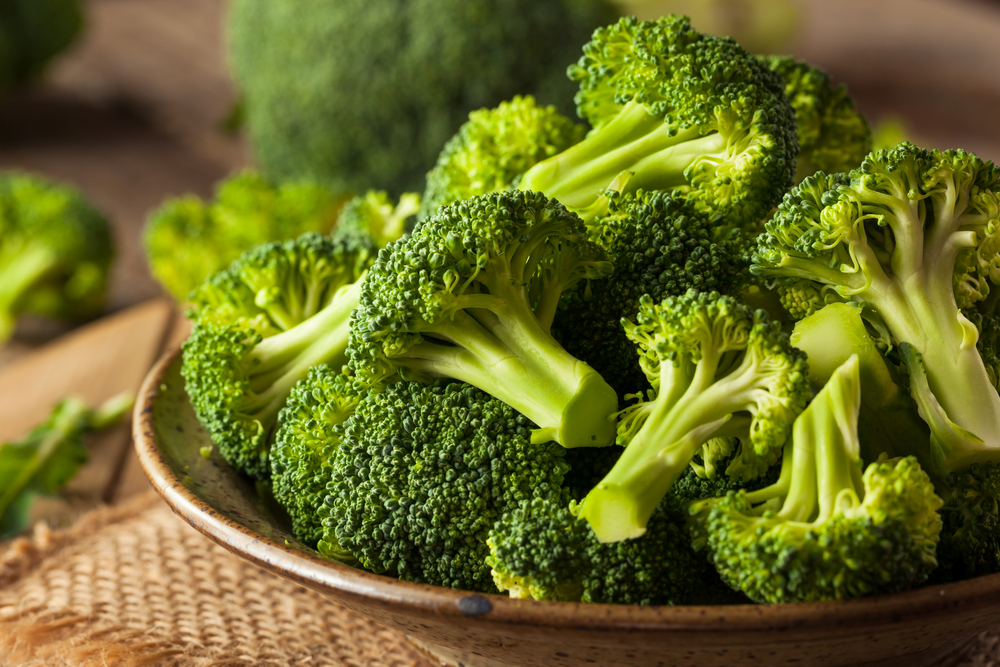
Broccoli looks like mini trees, so they’re right up your dog’s alley. They’re green vegetables that are packed with fiber and antioxidants. They’re made up of vitamins and minerals such as vitamins K, C, A, and B-6. They’re a digestible plant protein, but they can cause gas, so it’s important to feed only small quantities to your dog.
Broccoli is low in calories and can be cooked if your dog likes soft food or raw for a healthy crunch.
2. Brussels Sprouts
Another tasty, green vegetable that is good for dogs is Brussels sprouts. Dogs tend to love them although they’re not always a human favorite. Brussels sprouts contain important minerals and vitamins such as manganese, folate, potassium, and vitamins C, K, A, B1, and B6. They boost the immune system and are good for bone density.
These green balls can make your dog quite gassy, so moderation is necessary. When serving them to your dog, cook them and slice them up.
3. Carrots
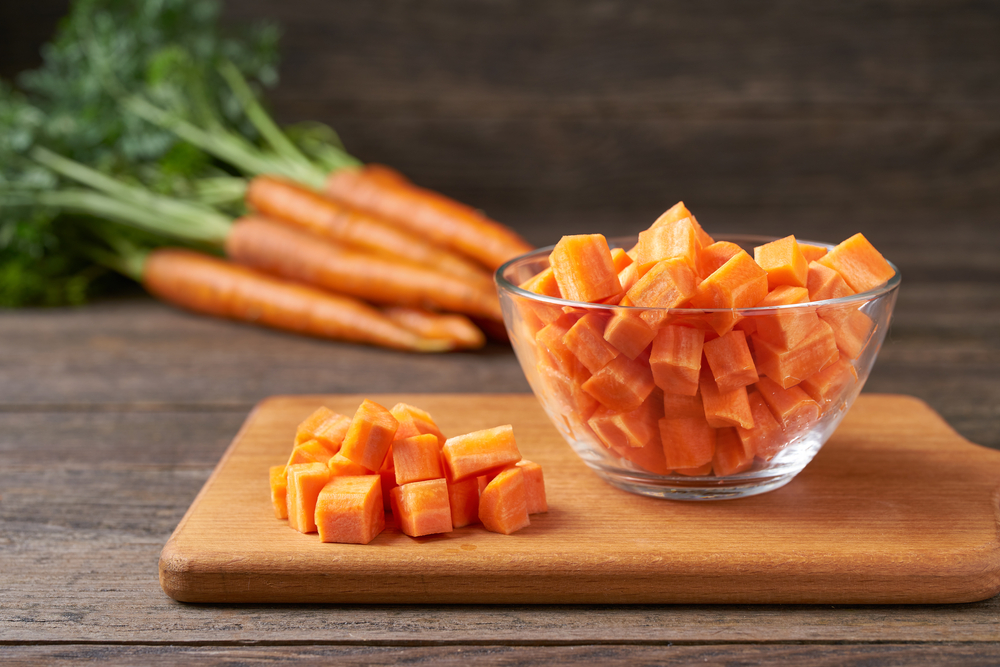
Carrots are an important orange vegetable high in vitamins and minerals, such as vitamin A and potassium. They’re low in calories but are hard and crunchy, which might help remove plaque from your dog’s teeth.
They can be eaten cooked, raw, chopped up, or grated for variety. Dogs love carrots for their sweet taste, but they contain around 5% sugar, so they’re not the best vegetable for diabetic dogs.
4. Celery
Another crunchy, tasty vegetable that can be given to your dog chopped up is celery. They’re packed with vitamins A and C, as well as potassium. Celery is a great snack for overweight dogs because it’s very low in calories and contains a lot of water, making them a great treat on a hot summer’s day.
5. Green Beans
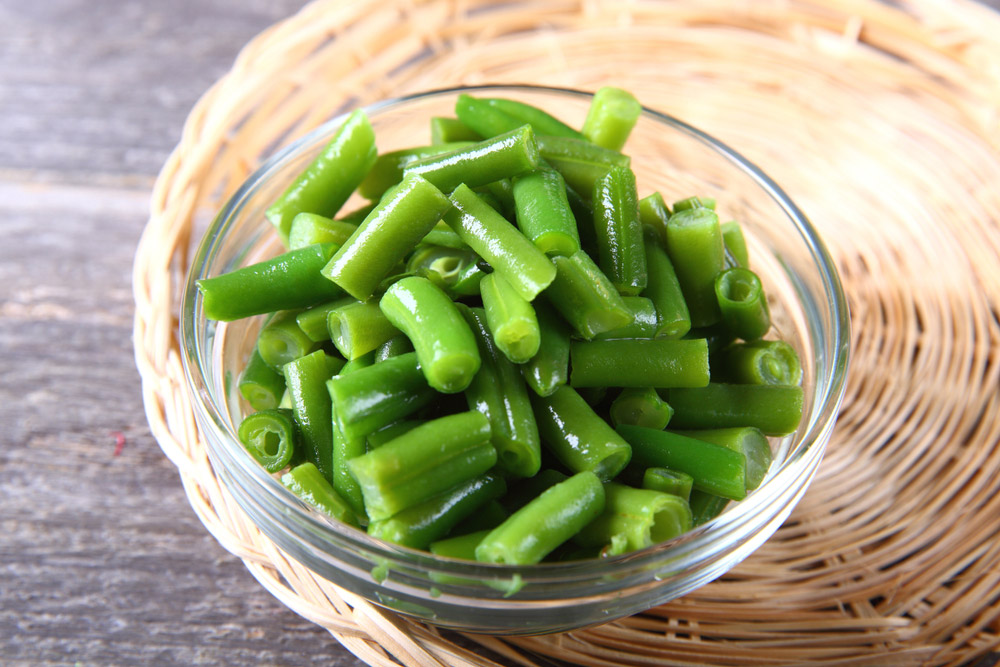
Green beans are a safe treat that can be served cooked, frozen, or raw. They are low in calories, so they’re a good alternative for dogs that need to slim down. Green beans contain protein, calcium, iron, and vitamins and minerals.
They also contain fiber, which will keep your dog full for longer. It’s important to only serve plain green beans to your dog, as garlic seasoning isn’t safe for dogs.
6. Sweet Potatoes
Sweet potatoes contain vitamins and minerals like potassium, calcium, and vitamins A, C, and B6. When serving them to your dog, remove the skin and boil them until soft and easy to eat. You can also mash the sweet potatoes and mix them in with your dog’s kibble.
7. Spinach
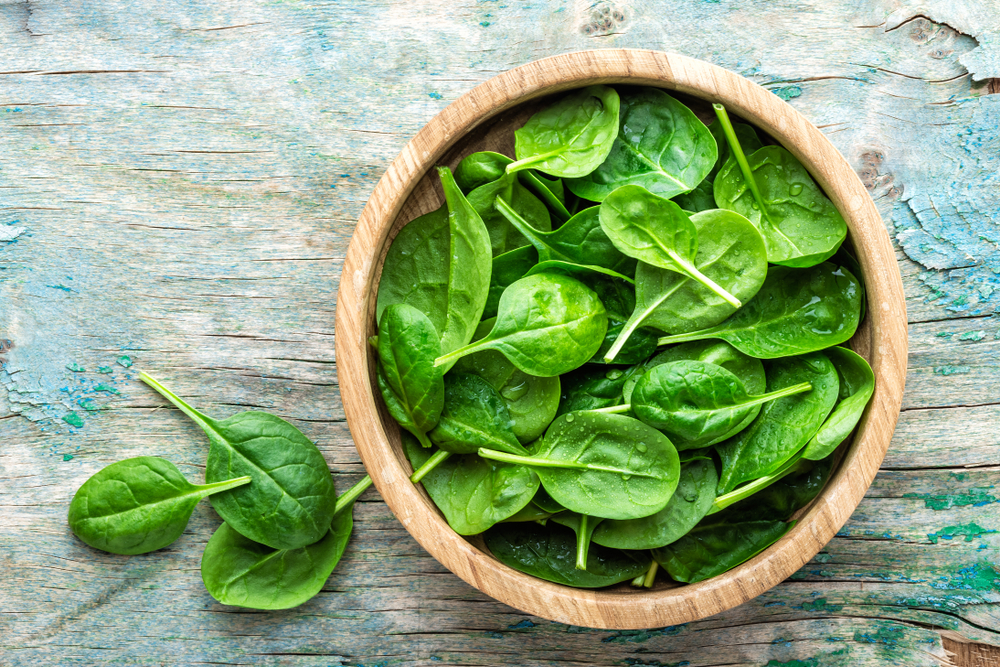
Spinach is high in iron and folate, two important nutrients for the body’s functioning. It also contains calcium and vitamins K and A, which are used in the blood clotting cascade and vision respectively. You can give it to your dog raw or cooked, but it should be served in moderation.
Although spinach is safe for dogs, if eaten in large amounts, it can block your dog’s body from being able to absorb calcium, which can lead to kidney problems.
8. Peas
Peas are commonly in dog food and can also be enjoyed on their own. Their small size makes them a great treat to reward your dog with during training, and they contain fewer calories than commercial dog treats, making them a healthier alternative.
Peas contain important nutrients such as zinc, potassium, magnesium, fiber, and vitamins A, C, and K. They also contain plant protein. They can be served cooked, fresh, or frozen.
9. Bell Peppers

Bell peppers have a unique taste and a crunchy texture that dogs love. Although there are several colors, they’re all safe for your dog to enjoy. Bell peppers are water-dense, making them a hydrating snack, and they contain vitamins A, B6, and C. They also contain several minerals, such as potassium and phosphorus.
Before serving bell peppers to your dog, remove all the seeds and stems and chop them into small pieces that are easier to eat.
10. Zucchini
Zucchini is another low-calorie and low-cholesterol vegetable that dogs can enjoy. It is high in vitamin C, calcium, magnesium, and iron. Your dog can enjoy zucchini raw, but it must be sliced into smaller pieces.
If cooked, you can mash it or mix it in with your dog’s kibble. It is high in fiber and may make your dog gassy.
11. Cauliflower
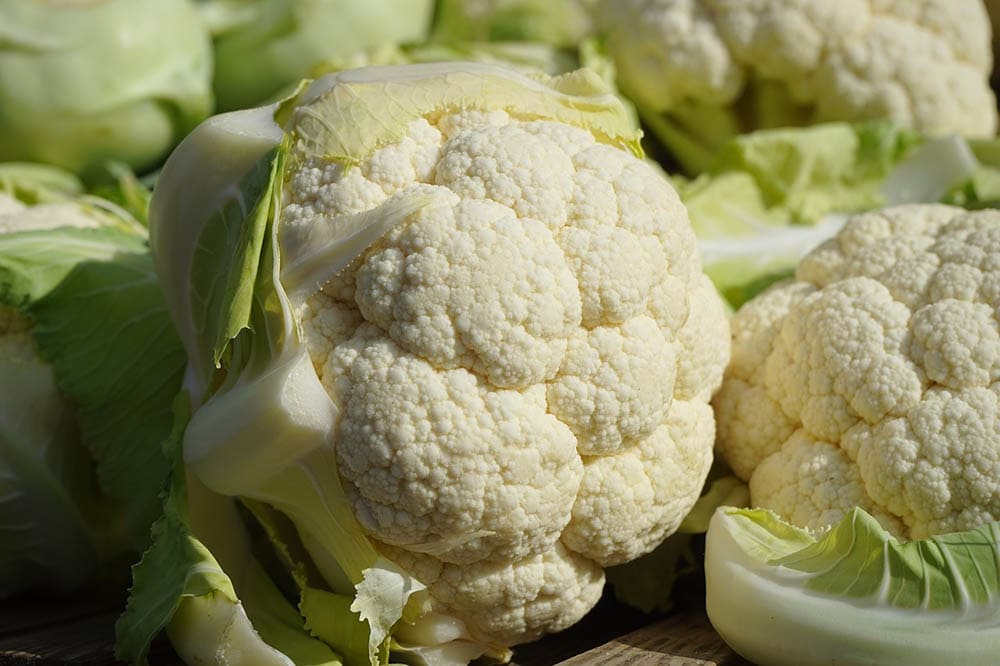
Cauliflower is similar in shape and texture to broccoli but differs in color. It is low in calories, full of fiber, and contains vitamins C and K, as well as antioxidants, potassium, calcium, and magnesium. When serving cauliflower to your dog, you can do a lot with it, as it can be eaten raw, boiled, or roasted.
It can also be given as a rice alternative. As with other high-fiber vegetables, cauliflower can make your dog gassy.
12. Corn
Although corn often gets a bad rap when used in dog food because it is considered a filler, it has nutritional benefits and deserves to be on this list. First, corn contains fiber that helps with digestion and prevents constipation. It is a carbohydrate that provides your dog with energy and contains linoleic acid, which helps maintain your dog’s coat and skin.
You can serve corn raw or cooked in pieces to your dog, but you should never give your dog corn on a cob because it is a choking hazard and a common intestinal foreign body.
13. Pumpkin
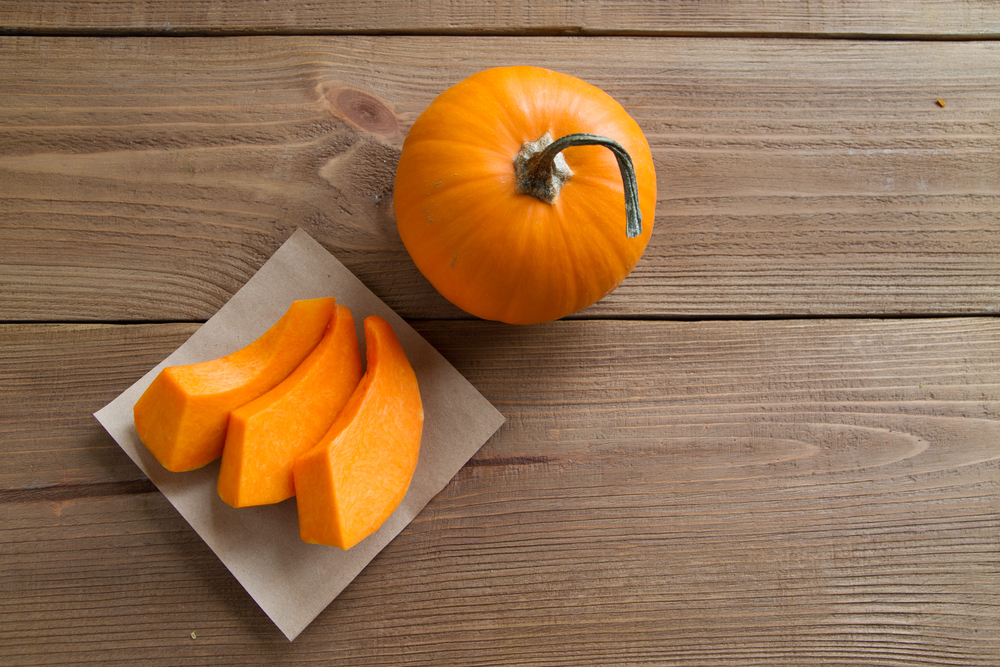
Pumpkin is tasty, safe, and healthy for dogs. It is high in fiber, which aids in good digestion and combats diarrhea and constipation. The best way to serve pumpkin to your dog is boiled, roasted, or pureed. It contains vitamins A, B1, B6, and C, as well as copper, folate, and manganese.
14. Cucumbers
Although cucumber is technically a fruit, it is used as a vegetable in the culinary world. This water-dense food is low in calories and fiber and contains antioxidants, magnesium, potassium, and vitamins C and K. Although many people enjoy pickled cucumbers, they should not be shared with your dog because they contain a lot of salt and can be mixed with toxic ingredients such as onions or garlic.
You can serve fresh, plain, sliced cucumbers to your dog.
What Foods Should My Dog Avoid?
Now that we’ve discussed some popular vegetables that are safe for your dog, let’s touch on some that your dog should avoid. Some of these might surprise you!
- Green potatoes and tomatoes. Although when skinned and cooked, white potatoes are safe to eat, green potatoes are dangerous for dogs because they contain solanine. Similarly, cooked ripe tomatoes are fine, but raw green tomatoes are not.
- Wild mushrooms. Although all mushrooms aren’t dangerous to dogs, many species are. Therefore, keeping your dog away from wild mushrooms growing in the park, in the field, or even in your backyard is safer.
- Leeks, garlic and onions. These are toxic to dogs and can have serious effects if eaten. They contain sulfur compounds that damage red blood cells.
If you need to speak with a vet but can’t get to one, head over to PangoVet. It’s an online service where you can talk to a vet online and get the personalized advice you need for your pet — all at an affordable price!

Conclusion
Several vegetables (and some that are actually fruit) are safe for dogs to eat. Some common examples are sweet potatoes, Brussels sprouts, broccoli, cauliflower, celery, carrots, bell peppers, and cucumbers. Vegetables have many health benefits and are often used in dog food.
As with anything, it’s crucial to give vegetables to your dog in moderation because too much fiber can cause an upset stomach.
Also see:
Featured Image Credit: Kasefoto, Shutterstock

